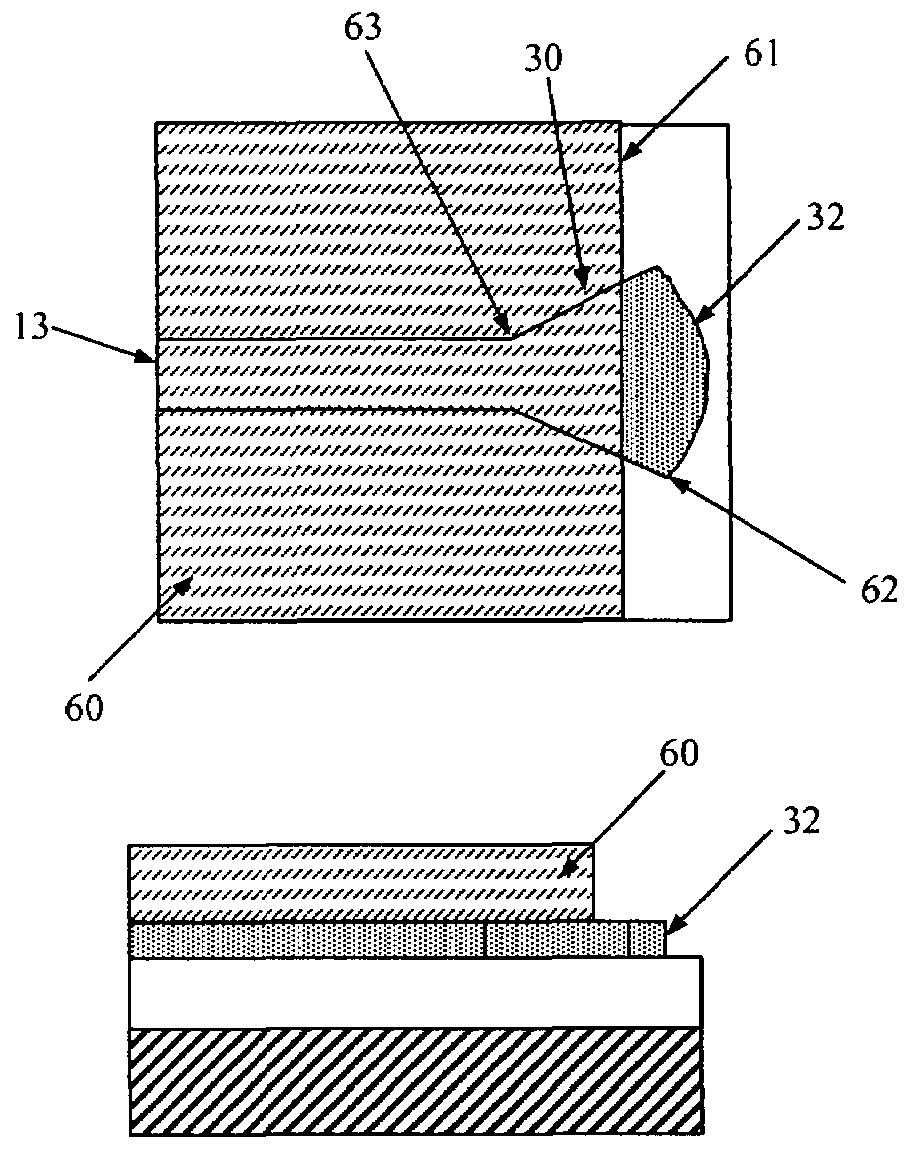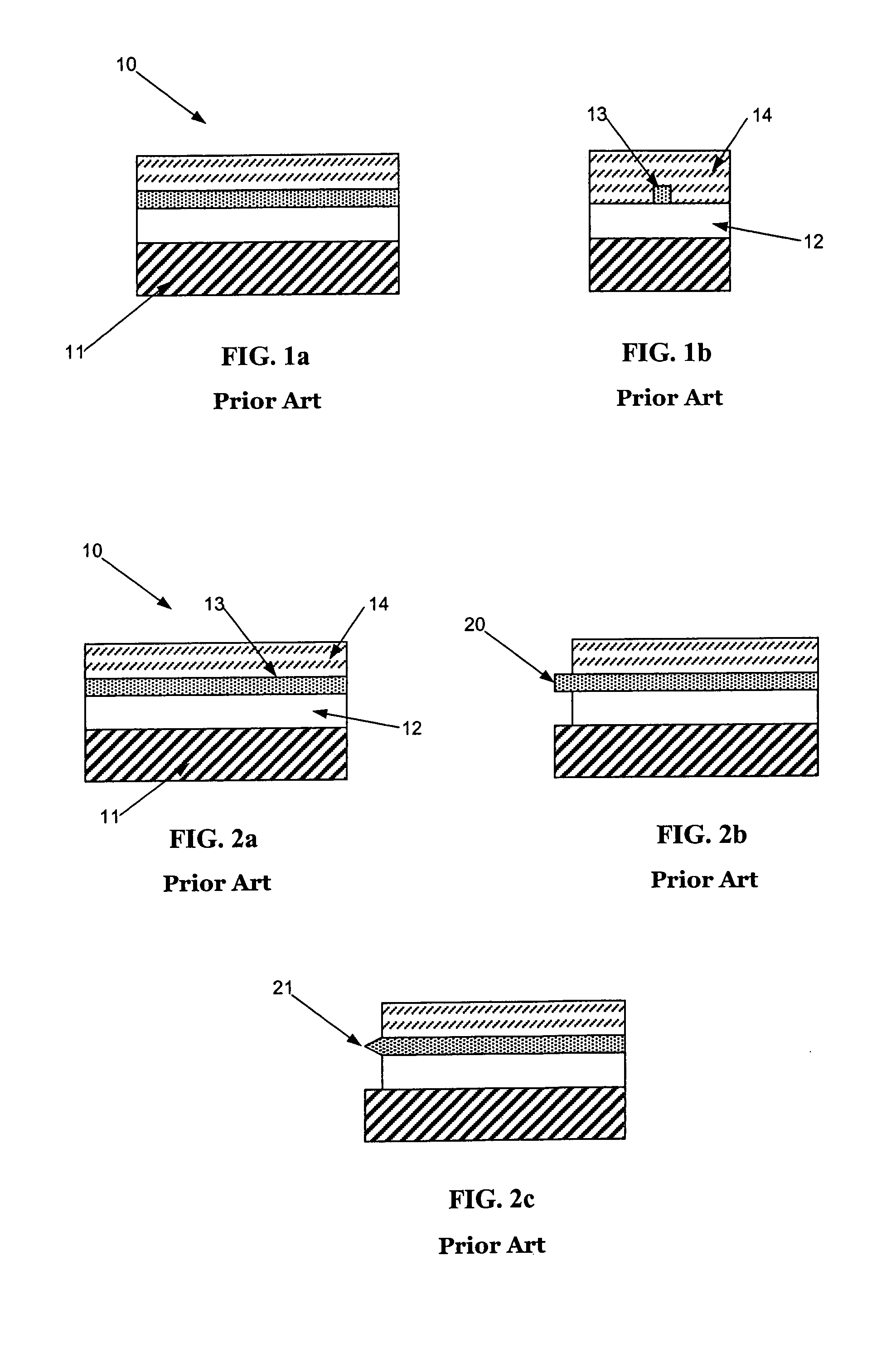Planar waveguide with patterned cladding and method for producing the same
a technology of patterned cladding and planar waveguide, which is applied in the direction of optical waveguide light guide, instruments, optics, etc., can solve the problems of reflection loss, difficult handling, limited applicability, etc., and achieve the effect of avoiding mechanical damage and scattering loss
- Summary
- Abstract
- Description
- Claims
- Application Information
AI Technical Summary
Benefits of technology
Problems solved by technology
Method used
Image
Examples
example 1
[0108]Following the procedure disclosed in U.S. patent application Ser. No. 10 / 308562, a lower refractive index polymer A was prepared with a viscosity of 2500 cP (at 20° C.) and a refractive index (measured at 20° C. on an Abbe refractometer with room light) of 1.483. A higher refractive index polymer B was prepared with a viscosity of 2200 cP (at 20° C.) and a refractive index of 1.509 (at 20° C.). A suitable photoinitiator was added to both polymer A and polymer B.
[0109]Polymer A was spin coated onto a silicon wafer and cured with UV light from a mercury lamp, to form a lower cladding layer 20 μm thick and with a refractive index of 1.478 (at 20° C. and 1550 nm). Polymer B was spin coated onto the lower cladding, and patterned with UV light through a mask; the unexposed polymer B material was then dissolved in isopropanol to form a core and unitary lens structure as shown in FIG. 3a. The core was 8 μm wide and 15 μm high, and had a refractive index of 1.505 (at 20° C. and 1550 nm...
example 2
[0111]Polymer A from Example 1 was spin coated onto a silicon wafer and cured with UV light from a mercury lamp, to form a lower cladding layer 20 μm thick and with a refractive index of 1.478 (at 20° C. and 1550 nm). Polymer B from Example 1 was spin coated onto the lower cladding, and patterned with UV light through a mask; the unexposed polymer B material was then dissolved in isopropanol to form a core with four tight bends as shown in FIG. 8. The core was 8 μm wide and 15 μm high, and had a refractive index of 1.505 (at 20° C. and 1550 nm). Finally, polymer A was spin coated over the core and patterned with UV light through a mask; the unexposed polymer A material was then dissolved in isopropanol to form a patterned upper cladding as shown in FIG. 10.
example 3
[0112]Polymer A was meniscus coated onto an acrylic substrate (Perspex, or polymethylmethacrylate), and cured with UV light from a mercury lamp, to form a lower cladding layer 10 μm thick and with a refractive index of 1.478 (at 20° C. and 1550 nm). Polymer B was meniscus coated onto the lower cladding, and patterned with UV light using a scanning projection aligner; the unexposed polymer B material was then dissolved in isopropanol to form a core and unitary lens structure as shown in FIG. 3a. The core was 8 μm wide and 20 μm high, and had a refractive index of 1.505 (at 20° C. and 1550 nm). Finally, polymer A was meniscus coated over the core and patterned with a scanning projection aligner; the unexposed polymer A material was then dissolved in isopropanol to form a patterned upper cladding as shown in FIG. 6a.
PUM
 Login to View More
Login to View More Abstract
Description
Claims
Application Information
 Login to View More
Login to View More - R&D
- Intellectual Property
- Life Sciences
- Materials
- Tech Scout
- Unparalleled Data Quality
- Higher Quality Content
- 60% Fewer Hallucinations
Browse by: Latest US Patents, China's latest patents, Technical Efficacy Thesaurus, Application Domain, Technology Topic, Popular Technical Reports.
© 2025 PatSnap. All rights reserved.Legal|Privacy policy|Modern Slavery Act Transparency Statement|Sitemap|About US| Contact US: help@patsnap.com



